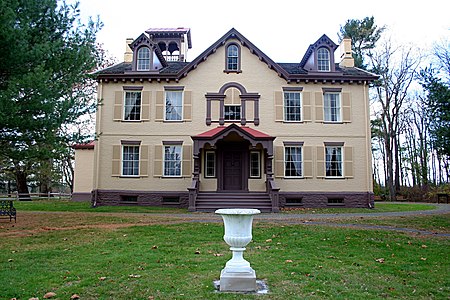Martin Van Buren National Historic Site
1974 establishments in New York (state)Historic house museums in New York (state)Houses in Columbia County, New YorkMartin Van BurenMuseums in Columbia County, New York ... and 8 more
National Historic Landmarks in New York (state)National Historic Sites in New York (state)National Register of Historic Places in Columbia County, New YorkPresidential homes in the United StatesPresidential museums in New York (state)Protected areas established in 1974Use mdy dates from May 2015Washington Irving

Martin Van Buren National Historic Site is a unit of the United States National Park Service in Columbia County, New York, 1 mile (1.6 km) south of the village of Kinderhook, 125 miles (201 km) north of New York City and 20 miles (32 km) south of Albany. The National Historic Site preserves the Lindenwald estate owned by Martin Van Buren, the eighth president of the United States. Van Buren purchased the 36-room mansion during his presidency in 1839, and it became his home and farm from his leaving office in 1841 until his death in 1862.
Excerpt from the Wikipedia article Martin Van Buren National Historic Site (License: CC BY-SA 3.0, Authors, Images).Martin Van Buren National Historic Site
Old Post Road,
Geographical coordinates (GPS) Address Nearby Places Show on map
Geographical coordinates (GPS)
| Latitude | Longitude |
|---|---|
| N 42.369705555556 ° | E -73.704205555556 ° |
Address
Lindenwald
Old Post Road 1013
12106
New York, United States
Open on Google Maps






